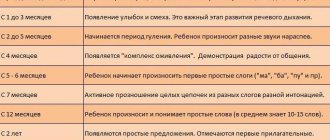Rate of speech is a sign of speech function, which facilitates the perception of heard information by others. Changes in speech rate include slowing down, speeding up, and stuttering. An incorrect speech rate can impede the development and learning of children, reduce the quality of life, and worsen a person’s social adaptation. Patients with accelerated, slow speech or stuttering require mandatory correction of speech defects. For children, therapy is prescribed as early as possible to prevent developmental delays.
Characteristics of speech tempo, types of speed disorders of speech function
Speech tempo is a characteristic property of speech that reflects the speed at which sounds are produced during a conversation. Speech tempo may be disrupted in the form of acceleration or deceleration, as well as stuttering. It depends on the speed of pronunciation of sound units that follow each other, as well as on the number and duration of pauses between words or sentences. The optimal speech rate for a healthy child or adult is 9-14 sound units per second. If a healthy patient increases the speed of speech, the frequency of pronouncing sound units increases to 15-20. At the same time, speech remains intelligible.
Types of changes:
- Tahilalia.
- Bradylalia.
- Stuttering.
Preschoolers have a tendency to accelerate speech, which can be explained by the immaturity of the inhibitory mechanisms of the brain and reduced control over speech. The reason for the increase in the rate of speech may be haste in speech among family members. In this case, the child gets used to speaking quickly. During puberty, the speed of sound reproduction may increase further. In patients with neuroses and other psychiatric diseases, rapid speech often provokes stuttering.
Increasing the speed of sound reproduction in a child inhibits the development of speech function. This leads to incorrect sound pronunciation and decreased intelligibility of words. If help is not provided in time, the patient will speak incorrectly and quickly throughout his life.
The concept of tachylalia, clinical manifestations of pathology, etiology
Tahilalia is an acceleration of speech with a frequency of 20-30 sound units. The disease develops due to changes in the functioning of the extrapyramidal system. According to scientist D. Weiss, accelerated speech provokes stuttering. Tachylalia can be inherited.
M.E. Khvattsev associates the occurrence of rapid speech with pathology of the articulatory apparatus, incorrect speech of relatives, untimely correction of the child’s speech function, and attention deficit. A. Liebmann considered the cause of tachylalia to be a lack of motor skills and auditory perception.
A patient with tachylalia speaks very quickly, making it difficult to concentrate. During a conversation, the child appears to hesitate, repeat what has already been said, swallow sounds, replace syllables, and unclear construction of phrases and sentences. But, if you draw the child’s attention to the incorrectness of speech, all errors disappear. Symptoms may intensify with excitement, while talking with strangers, during an argument, or during public speaking.
The patient experiences changes in writing and reading. Children with accelerated speech rearrange syllables and letters while writing, and replace words with similar sounds and spellings. The movements of patients with tachylalia are fast and abrupt. During sleep, the patient may rush around the bed. Many patients experience tics, hyperactivity syndrome, memory and attention deficits.
A child with tachylalia is excitable and quick-tempered. When excited, the patient experiences redness of the skin on the face, sweating, and coldness of the extremities. The patient is often uncontrollable and undisciplined. Such a child has a reduced ability to learn at school.
An increase in the rate of speech is accompanied by changes in the motor sphere, autonomics, and mental processes. The patient may also experience a lack of willpower and a disturbance in the emotional sphere.
The concept of bradyllalia, clinical manifestations
Bradylalia is a pathology of speech function in which the patient speaks at a slow pace (less than 9-14 sound units per second). There are long pauses between words and sentences, words are greatly stretched out during their reproduction. The disease can occur on its own or be a symptom of an underlying disease: nervous system pathology, head injury, brain tumor. When slow speech is a symptom of another disease, the patient experiences inhibition of motor function, asthenia, lethargy, and weakness. On its own, bradyllia occurs in slow and phlegmatic children and patients living in northern latitudes.
Speech signs of bradyllalia include slow speech, leisurely reading and writing. The child reads monotonously with large intervals between words and sentences, words are stretched out. A patient with bradyllalia sometimes produces sounds with a nasal tone. It is very difficult for others to perceive the patient’s conversation, as attention decreases, fatigue and tension arise due to too slow pronunciation.
Non-speech signs of a reduced speech rate are characterized by a decrease in motor function (fine motor skills, general movements, facial expressions). The patient's movements are slow, poorly coordinated, incomplete, awkward. The patient has practically no facial expressions. Patients have impaired speech perception, decreased attention, memory, and impaired thinking.
Patients have poor spatial orientation and find it difficult to complete any instructions or tasks the first time. Children with slow speech have difficulty switching from one subject to another.
Concept of stuttering, clinical symptoms
Stuttering in speech therapy is a speech pathology in which the rhythm, tempo, and fluency of speech are changed due to convulsive contractile activity of the muscular apparatus that carries out articulation. Pathology manifests itself in childhood and puberty. Most often, the disease begins to manifest itself at 2-5 years of age.
Stuttering is caused by muscle spasms. They can be tonic or clonic. Tonic spasms make it difficult to move from one sound to another. Clonic seizures provoke the repetition of words, syllables and sound units.
The causes of stuttering are:
- Immaturity of the nervous system.
- Injuries in utero, during the birth of a baby.
- Mental trauma.
- Bilingualism in the family.
- Increased development of speech function, which does not correspond to the patient’s age.
- The presence of a person who stutters in the child’s environment.
Stuttering has several periods of formation. The initial stage of the disease is characterized by a very rare disturbance in the fluency of conversation. In this case, stuttering occurs only with strong excitement, anxiety, and excitement. At an early stage, the child does not realize the presence of a defect in speech function.
At the second stage of the disease formation, the process becomes chronic. The patient is aware of the presence of stuttering, but is not afraid to talk. At the third stage of pathology development, the smoothness of conversation is noticeably disrupted. It is difficult for the patient to reproduce sounds, but there is a desire to talk, and the patient does not develop fear when talking.
The fourth stage of stuttering is considered the most difficult. The patient tries to talk less, as he feels very uncomfortable during speech. Fear of speech is present, which affects the child’s psychology. Patients' communication suffers. Such patients have difficulty studying and working.
Forecast and methods of prevention of tachylalia
A favorable prognosis for the treatment of tachylalia directly depends on the neurotic and mental state of the patient, as well as active collaboration with a doctor and speech therapist. In cases of the development of battarism and polternism, the prognosis is uncertain.
In order to prevent the development of tachylalia, experts recommend following simple precautions regarding the prevention and treatment of head injuries, neuropsychiatric disorders, infections and brain tumors. You should also pay special attention to the child’s neuropsychic development and the correct formation of his speech. It is necessary to protect her from such extreme irritants as noise, intimidation, excessive severity, and unexpected shouts. At the same time, one should not overindulge children and indulge all their desires. Adults should strive to maintain an even, calm attitude towards the child against the backdrop of reasonable demands. Particular attention should be paid to nervous, impressionable, vulnerable children. You need to show increased sensitivity to them. It is very important to strengthen the health of these children and the nervous system in every possible way in accordance with the recommendations of doctors.
From a very early age, the child actively imitates the speech of others. But imitation, being a powerful means of developing children's speech, at the same time poses certain dangers. It was already noted above that both tachylalia and bradyllalia can arise as a result of imitation. Therefore, it is necessary to exclude all contacts of the child with people who speak too quickly or too slowly.
The speech of parents and educators should always be correct, distinct, smooth, clear in articulation, simple in structure, expressive and leisurely, but not overly drawn out. Children should not be allowed to speak while inhaling, choking and suffocating. If a child constantly hears correct speech - both in the family and in kindergarten - he himself will eventually speak correctly.
Diagnostic measures
Diagnosis of speech dysfunction (tachylalia, bradylalia, stuttering) includes identifying the cause of the disease. The child is referred to a neurologist. The neurologist conducts an examination, collects anamnestic data (speech function of relatives, pathologies of pregnancy and childbirth), prescribes an examination (electroencephalogram, magnetic resonance imaging, ultrasound examination of blood vessels and other techniques). If there are mental traumas that contribute to the occurrence of stuttering, the patient is referred to a psychologist. After the examination is completed, a speech therapist works with the child by specialized specialists.
The speech therapist also collects anamnestic data on the speech characteristics of relatives, looks at the examination results, and conducts a speech therapy study. The specialist determines the state of the child’s motor activity (general, speech), evaluates speech function (quality of pronunciation of sounds), rate of speech: fast, slow, stuttering. It is also important for a speech therapist to know the state of the articulatory apparatus and facial muscles. If the child can write and read, the specialist assesses the state of writing and reading (speed, correctness of words, presence of pauses in sentences, presence of stuttering, hesitation during reading, speed and correctness of writing words and sentences). At the end of the examination, the speech therapist draws up a speech therapy report.
Human speech volume
This characteristic of speech is very contradictory. So, for example, a loud voice may indicate self-confidence, openness and sociability, if it is always characteristic of a person, or it may indicate anxiety, an excited state, fear and self-doubt, if it manifests itself situationally.
A quiet voice is usually a sign of a gentle character, restraint, and sometimes some unemotionality and lethargy. However, you need to keep in mind that there are people who go almost to a whisper in a state of rage. Therefore, it is necessary to monitor what voice volume is usually characteristic of a person.
A person who always speaks at approximately the same volume is most likely inclined to hide his own emotions and experiences, is restrained and balanced.
Speech volume
Therapeutic measures
Treatment measures include eliminating the causes of speech dysfunction, as well as corrective work. If a child has a pathology that has caused a change in speech, he is first prescribed a course of treatment. Upon completion of therapy for the underlying disease, the patient is referred to a speech therapist. The speech therapist draws up a plan for speech therapy sessions. Correction is carried out both at home and in educational institutions. The number of classes is determined by the severity of speech disorders.
For bradyllalia, speech therapy classes are aimed at developing a faster pace of conversation and training the articulatory and motor apparatus. The speech therapist teaches the child to write, read, and clearly pronounce phrases and sentences faster. The classes train memory and attention. Outdoor games, skits, and dialogues are actively used, which help accelerate the pace of speech function. A good effect from the correction can be expected after 4 weeks. During a monthly course of therapy, speech speed becomes faster and pronunciation becomes clearer.
Children with slow speech need to conduct independent studies at home and control their conversation.
When treating tachylalia, a speech therapist conducts classes that include breathing training (slow, even), reading, and orderly, calm speech. The specialist teaches the child to work with a team, organizing performances in front of a group of people or children. During classes, they must develop general, auditory attention and train diction. The course of treatment for preschoolers and primary school students is 6-12 months.
It is better to correct tachylalia as early as possible (before 5 years of age), since therapy is less effective during puberty.
Stuttering correction is carried out at home and in the speech therapist's office. Family members need to avoid conflict and speak slowly and clearly. During treatment, it is better to refrain from visiting kindergarten for 2 months, events, and holidays, so as not to excite the patient. The correction course includes physical activity (running, swimming, cycling). During classes, you need to practice counting (count clothespins by attaching them to paper cut out in the shape of a circle), and use silent games. For correction, tongue twisters, gymnastics for the articulation apparatus, and breathing exercises are used.
Correction of tachylalia
Correction of tachylalia is accompanied by complex medical, psychotherapeutic and speech therapy interventions, namely:
- carrying out balneotherapy;
- exercise therapy;
- autogenic training;
- speech exercises;
- speech therapy rhythm;
- drug therapy;
- physiotherapy;
- neurosedative massage;
- balneotherapy;
- sessions with a psychologist.
At the same time, the main goal of correctional work to eliminate tachylalia is to develop the skill of calm, unhurried, smooth, rhythmic speech. In this case, the patient attends collective classes, which involve adherence to discipline and a regime of maximum speech restriction. Question-and-answer conversations are used in speech therapy work. In addition, various speech techniques, exercises, logarithmics, speech exercises to the beat, loud reading, and listening to samples of correct speech are used in the classes. At the end of the course, patients begin stories, retellings, silent reading and, of course, public speaking, which are then analyzed.
Correction of tachylalia in adult patients lasts 3 months, and in children - up to a year. Throughout all classes, children are accustomed to speaking slowly, calmly and smoothly. At first it can be very difficult with such a slow pace of speech. For this purpose, children can pronounce phrases while hitting the ball, jumping, or using a metronome. Such techniques help maintain a given pace throughout the entire lesson.
With tachylalia, consistency and logical thinking are often disrupted. This should also be given great attention. In such cases, it is useful to teach children to compose a story according to plan, telling them the sequence of presentation. This type of storytelling is effective when the speech therapist begins the phrase, and all the children take turns finishing the sentence. In this case, all phrases must be united by one topic. Such exercises develop logical thinking in children and at the same time allow them to practice speaking at a leisurely pace.
After completing the course of classes, it is necessary to very carefully monitor the child’s speech for a year, since tachylalia tends to return. It is necessary to protect the skills acquired by the child and not allow him to speed up the pace of speech. If the normal rate of speech is maintained for a year, then tachylalia has disappeared. In case of relapses of tachylalia, repeated sets of classes are carried out.
Clarity of pronunciation
Clarity of pronunciation is an indicator of internal discipline and the desire to clearly present one's position.
- Unclear pronunciation (muttering, muttering, etc.) is a manifestation of a disrespectful attitude towards the interlocutor - a person does not care about making it easy for others to hear him. Such people are characterized by a tendency to suppress their emotional reactions.
- Unclear and vague pronunciation speaks of softness, compliance and weakness of will.
- Clear, precise pronunciation of words indicates the calmness and rationalism of the interlocutor.
- If our interlocutor makes practically no open sounds, speaks with his mouth half-closed, then most likely we are dealing with a person for whom it is very important to keep his emotions under constant control. It is important not to confuse this option with another - if a person purses his lips during a conversation and his face takes on an arrogant expression, then this indicates his arrogance and disrespectful attitude towards people.
Clarity of words pronunciation
Psychological and pedagogical classification
The psychological and pedagogical classification takes into account the structural components of the speech system (sound aspect, grammatical structure, vocabulary), functional aspects of speech, and the relationship between oral and written speech.
Speech disorders in the psychological and pedagogical classification are divided into two groups.
Disruption of means of communication
PHONETIC-PHONEMATIC UNDERDEVELOPMENT
(FFN)
FND is a violation of the formation of the pronunciation of sounds of the native language in children with various speech disorders. It arises due to defects in the perception and pronunciation of phonemes.
The main manifestations of FFN:
Undifferentiated pronunciation of pairs or groups of sounds
- “tyumka”, “tyaska”, “chopper” instead of “bag”, “cup”, “hat”.
Replacing some sounds with others
- when a child pronounces a sound that is easier for him to reproduce. For example, “L” instead of “R”, “F” - instead of “W”.
Mixing sounds
- when a child can pronounce the sounds “R”, “L” or “S” separately, but makes mistakes in speech statements. For example, “a carpenter is planing a board” instead of “a carpenter is planing a board.”
GENERAL SPEECH UNDERDEVELOPMENT (GND)
OSD are various complex speech disorders in which the formation of all components of the speech system is disrupted: the sound side (phonetics) and the semantic side (vocabulary, grammar).
ONR can be observed in complex forms of childhood speech pathology: alalia, aphasia (always), as well as rhinolalia, dysarthria.
There are four levels of ONR:
OHP level 1
- the child completely lacks coherent speech - “speechless children”. The child tries to convey his thoughts to others using gestures or extremely unclear, simplified speech.
OHP level 2
— initial speech is developed, but the vocabulary is extremely poor. The child pronounces most words incorrectly. Making mistakes, he can compose and pronounce the simplest sentence of several words.
OHP level 3
— is quite good at composing sentences, but pronounces words with errors, and the meaning of the sentences may not be clear to others.
OHP level 4
— speaks well, knows how to make sentences. The speech of a child with ODD at this stage is practically no different from his peers. Problems arise only when composing long phrases.
Violations in the use of means of communication
Stuttering
- a disorder of the tempo-rhythmic aspect of speech, caused by repeated convulsions in the articulatory, vocal or respiratory parts of the speech apparatus. A combined defect is also possible, in which stuttering is combined with OHP.
Non-convulsive disturbances in the tempo and rhythm of speech
- stumbling, tachylalia, bradilalia.









